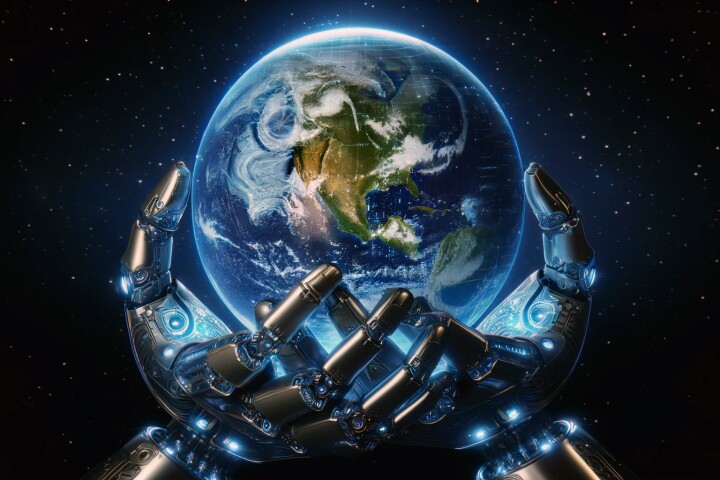When Occipital launched its Kickstarter campaign for a portable 3D sensor for mobile devices, it saw the project fully funded within a few hours. Knowing we had to see this gadget in action, Gizmag met with co-founder Vikas Reddy after Structure Sensor had become the 50th Kickstarter project to reach the million-dollar mark. Our goal was to test the gadget that has its backers so eager to test one too.
With the Smithsonian launching its first conference about 3D scanning, we decided to take the Structure Sensor to the Boulder History Museum in Colorado to see what this affordable and portable 3D scanner could do for a smaller museum. We planned to digitize many of the museum’s artifacts and create a 3D panorama of the museum’s small but intricate rooms, and I hoped to discover what made the Structure Sensor so intriguing.
Digitizing 3D Environments
Given the portability of the Structure Sensor, one of the uses that Reddy is most excited about is its ability to easily capture a 3D panorama of a room or space. We found a small room in the museum that nonetheless had several odd corners, niches and intricate displays. As Reddy let the iPad scan the room, we discussed Occipital’s goals for this feature.
Currently scanning is most successful when the user stands in the middle of the room and turns in place, but Occipital anticipates that end users will instead be able to walk through an area, creating a 3D scan of everything they encounter or later add more to a scan, perhaps as the layout or furniture changes.
We created a few scans of the room, noting that corners and relative distances were true, and spun our 3D-modeled room in the app, admiring its details.
Reddy commented, “"In the same way you never print out a map anymore, very soon you'll have an accurate 3D model of your home in your pocket so you never have to worry [about] a measuring tape." Once something has been scanned, anything can be measured, any edges or spaces defined.

3D Object Scanning
While we quickly proved the merits of Structure Sensor’s object scanning, Reddy did point out that there are generally better options for scanning really small objects.
However, in our museum-goer mindset, we both agreed that it would be ideal for creating an impromptu souvenir. See an object you admire? Scan it, 3D-print it later (or immediately, using the tool’s Shapeways implementation), and forever have a tangible memory, even if there’s no gift shop.
While the dentist's chair we encountered would make a slightly off-putting souvenir, we chose to do a full scan of this turn-of-the-century artifact, since we were able to walk around it completely. We also scanned the front and sides of other objects — beer barrels, pots, gold mining equipment, a pack saddle, and our photographer.

The scanning process is fairly simple: zoom in and out to define a scanning boundary, start the scanning, and then just move slowly around the object. I asked if my clumsiness could affect the quality of a scan, and Reddy assured me that there isn’t any skill or dexterity needed. Additionally, you can flip between modes to view meshes or filled-in surfaces if desired.
Occipital uploaded a 3D model of our dentist's chair, complete with its own "Do Not Touch" sign on the seat. Go ahead, print your own mini souvenir and touch it all you want.

Personal and Commercial Use
Occipital has been approached by various companies interested in using Structure Sensor, primarily construction companies who repeatedly need to map and measure areas. Others have expressed interest in using it to develop custom prosthetics and orthotics.
As we explored the museum, we were often joined by a museum curator, Emilie Kintner, who was excited by the potential for museums. She related that because of security and archival issues, it’s not possible for them to display even a fraction of their collection, but if objects could be scanned (and Structure Sensor can scan in color as well), then tour groups can interact with objects that aren’t actually there.
Additionally, Kintner expressed that a common challenge in fabricating exhibits is not knowing if something will easily fit, especially a problem when storage is offsite. An easy remedy is to digitally store all the physical information, including the complete 3D walkthrough of the museum, and then everything can be manipulated virtually.
Kickstarting, and the Future
Having hit the million-dollar pledge milestone a week ago, and with shipping scheduled to start in only a couple months, it’s clearly an exciting time for Occipital. Its Kickstarter launch was timed to overlap with the new iPad Air announcement. With the new iPad's processing speed expected to be twice as fast as the last, Structure Sensor will also be able to do more. Indeed, most of Occiptal's effort now is in refining the software.

Occipital’s previous apps filled a gap that most users didn’t even know existed yet, and the company hopes to be on the same edge with portable 3D scanning. Reddy commented that they chose Kickstarter with the expectation that users there would sense the potential in this technology. With Structure Sensor being the 10th highest grossing technology project ever, it’s clear that backers expect a lot and that Occipital has the potential to deliver.
Structure Sensor's Kickstarter campaign ends on November 1.
In the video below, watch as Occipital takes the Structure Sensor to Ripley's Believe It or Not and demonstrates some of the digital scanning techniques referred to above.
















